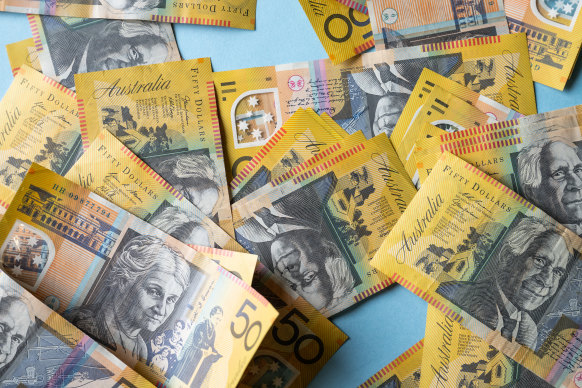Banks to refund millions in fees to more than 700,000 customers
Banks will refund $60 million to low-income customers receiving government concession payments who were in high-fee bank accounts despite being eligible for cheaper products after a probe by the corporate watchdog.
The Australian Securities and Investments Commission (ASIC) will on Tuesday announce that about 770,000 customers will receive refunds from banks in the latest development in the regulator’s push for banks to pay back various account fees charged to people receiving government concession payments.
ANZ Bank is paying out the most in the latest round of refunds, followed by Westpac, while Commonwealth Bank is not paying further refunds after it previously made $25 million in “goodwill payments” to about 87,000 Indigenous concession customer accounts.
National Australia Bank was not included in ASIC’s review because it has not charged dishonour, account-keeping or overdraw fees on transaction accounts since 2014, the regulator said.

The corporate cop says banks will pay $60 million in refunds to customers eligible for lower-cost accounts.Credit: Louie Douvis
ASIC last year said Commonwealth Bank, ANZ Bank, Westpac and Bendigo and Adelaide Bank would refund $28 million to people on low incomes, particularly First Nations customers, after a review found the customers had been kept in high-cost products even though they were eligible for lower-cost accounts.
Since that report, the estimated $28 million in refunds has swelled to $33 million, and ASIC has widened its work with banks to look at the effect on all low-income customers from charges including dishonour, overdraw and account-keeping fees.
As a result, a further $60 million will be refunded to more than 770,000 customers, as three of the four banks named in last year’s report have committed to paying refunds to a broader group of customers.
A further seven banks have also committed to paying refunds, the watchdog said.
It brings the total payout to customers receiving government concession payments, whom ASIC said were typically known as “low-income customers”, to $93 million.
“Despite the improvements banks have made during our surveillance, there is clearly work to be done,” ASIC chairman Joe Longo said. “It should not take an ASIC review to force $93 million in refunds or make banks assess their processes to ensure the trust and expectations placed in them are justified.”
ASIC said banks had taken different approaches when assessing what they would pay.
ANZ will pay the most in refunds, ASIC reported, with the Melbourne-based lender committing to refund an estimated $47.9 million to almost 590,000 accounts for fees incurred since mid-2019.
“As part of our further work, ANZ has also taken a deliberate decision to expand our remediation payments, leading to a larger cohort of customers being refunded fees and interest,” the spokesman said. “This applies to a broad set of customers, not just First Nations customers.”
The report said Westpac had committed to refunding more than $9.9 million to 148,000 low-income customers for fees incurred since July 2023. Bendigo and Adelaide Bank had refunded more than $155,000 to more than 600 people for fees incurred since 2023, ASIC said.
Commonwealth Bank had collected about $270 million in fees from about 2.2 million low-income customers not in the cohort covered in ASIC’s 2024 report, the watchdog said, but it would not be paying further refunds beyond those in response to ASIC’s report from last year.
A CBA spokesperson said: “We have made over $25 million in goodwill payments to approximately 87,000 Indigenous concession customer accounts, as identified by CBA in response to ASIC’s Better Banking for Indigenous Consumers Project. These payments were made on a goodwill basis, not as remediation for any contraventions.”
The spokesperson said CBA had a new low-fee account and it planned to move eligible customers to this product on an “opt out” basis.
CBA said the $270 million in fees cited by ASIC were incurred between 2019 and 2024, and they were disclosed to customers and charged in accordance with their terms and conditions.
“The concession customer group is a diverse cohort, including customers with varying levels of income, savings and home ownership,” the spokesperson said.
Under the banking code of practice, which applies to all members of the Australian Banking Association, customers who receive government concession payments and qualify for a concession card are entitled to access a low-fee account.
The code says banks must take steps including providing information about low-fee accounts to customers who identify themselves as low-income earners. It also says banks must offer products without overdraw or dishonour fees to concession cardholders who request a low-fee account.
The Business Briefing newsletter delivers major stories, exclusive coverage and expert opinion. Sign up to get it every weekday morning.